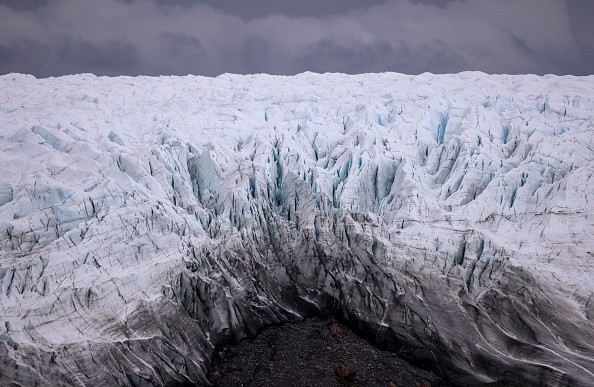The base of the Greenland Ice Sheet is melting at an alarming rate due to great amounts of meltwater falling from the surface. When the meltwater begins to fall, energy changes to heat in a process similar to the hydroelectric power which large dams produce.

How Meltwater Affect Glacier Movement and Quantity of Ice
Researchers from the University of Cambridge found that melting water plunging a half-mile or more down to the ice bed is the most significant source of heat beneath the second-largest ice sheet in the world, resulting in a phenomenally high rate of melting.
Greenland's Ice Sheet's dynamic behavior is difficult to anticipate due to a lack of direct measurements. The Greenland Ice Sheet is presently the world's most significant contributor to rising sea levels, due to both melting and release of ice, as per Phys.org.
Researchers from Aberystwyth University have completed a seven-year study on Store Glacier, one of the largest outlets from the Greenland Ice Sheet. The findings are being published in the journal Nature Communications.
For the first time, researchers from Cambridge University have discovered how heat is generated when meltwater from above is transmitted to the ice's core through massive breaches in the ice.
Temperatures rise and sunshine increases daily, forming thousands of meltwater lakes and streams on the Greenland Ice Sheet every summer.
Lakes swiftly drain to the bottom of the ice sheet through cracks and huge breaks in the ice. Because of the constant flow of water from streams and rivers, it is common for surface-to-bed connections to remain open.
Professor Poul Christoffersen of Cambridge's Scott Polar Research Institute has been investigating these meltwater lakes as part of the EU-funded RESPONDER project to learn how and why they drain so quickly and what effect they have on the ice sheet's overall behavior as global temperatures rise.
Estimating Basal Melt Rates
The researchers look at friction, geothermal energy, latent heat that is released when water freezes as well as the heat losses into the ice above when they examine basal melting of ice sheets and glaciers, said Christoffersen.
Until now, researchers hadn't taken into account the heat generated by the melting water itself while it was being drained.
The water that accumulates on the surface has a lot of gravitational energy stored in it, and when it falls, that energy has to go somewhere. Phase-sensitive radio-echo sounding, developed at the British Antarctic Survey and previously utilized on floating ice sheets in Antarctica, was used to estimate basal melt rates.
As original author Dr. Tun Jan Young explained that scientists weren't convinced that the approach would also operate on a fast-flowing glacier in Greenland. Tun Jan Young had erected the radar system on Store Glacier as part of his Ph.D. at Cambridge.
Due to the rapid ice deformation and the high volume of meltwater present throughout the summer, the work is more difficult than it would be in Antarctica, according to Scitech Daily.
Greenland Ice Sheet Produces Hydroelectric Power
A team of researchers estimated that Store Glacier lost an average of 82 million cubic meters of meltwater per day in the summer of 2014.
Power generated by falling water during peak melt seasons was estimated to be comparable to the power generated by China's Three Gorges Dam. It is estimated that during the height of summer, the Greenland Ice Sheet produces more hydroelectric power than all ten of the world's largest hydroelectric power stations put together.
This type of hydropower may easily double or quadruple, given what researchers are observing at high latitudes in terms of climate change, and they are still not even factoring these numbers when they assess the impact of the ice sheet to sea level rise, said Christoffersen.
The radar system reported high basal melt rates, so the researchers used temperature measurements from sensors implanted in a nearby borehole to corroborate the findings. Even though the ice sheet's melting point should be -0.40 degrees Celsius, they discovered water temperatures as high as +0.88 degrees Celsius near the base.
Related Article: Freshwater Ice That Melts Into Three Different Shapes Depending on Water Temperature Discovered
For more news, updates about global warming and similar topics don't forget to follow Nature World News!
© 2026 NatureWorldNews.com All rights reserved. Do not reproduce without permission.





